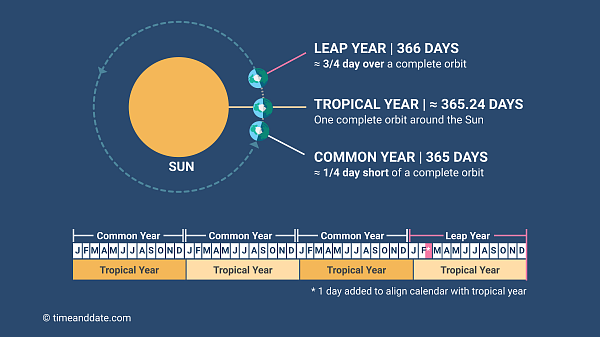A new year and that to a hopeful one for new beginnings after a rough 2020. This week, I have explored the following topics
1 – How is a year calculated?
2 – How do you dart math?
3 – How is snow formed?
———
1 – How is a year calculated?
Many mark the new year with jubilant celebrations. People start the countdown during the last 10 seconds of the year, and when the clock shifts to 00:00, there are euphoric fireworks across the skies. The countdown and the clock turning to 12 AM might seem a simple indicator for starting a new year. However, there is a little more to what meets the eye when we calculate what a “year” means.
Our calendar year doesn’t measure an Earth’s complete revolution accurately. In general, a year is defined as the time is taken for one physical object in space to orbit another. However, when you get into the details, the definition of the Earth’s revolution is not straightforward.
The three main variations of what a year means are tropical year, sidereal year, and anomalistic year.
- Tropical year (365.242 days) is the time taken for the Earth’s axis to return to the same position relative to the Sun. Our calendars try to follow the tropical year as close as possible. One of the benefits of calculating the year in this method is, we can have set days to demarcate the different seasons.
- Sidereal year (365.256 days) is 20 minutes longer than the tropical year. It is calculated using a fixed frame of celestial bodies as reference. It is defined as Earth’s time to get back to a particular position to see the same star rise behind the Sun.
- Since the Earth takes an elliptical orbit and the Sun is located in one of the foci, the orbit has two apsides – i.e. the closest and farthest points on the elliptical orbit from the Sun. Anomalistic year (365.260 days) is the time taken for the Earth to come back to a certain apside.

But the same complications apply for a day as well. A day is defined as one complete 360 rotation on its axis. What we know as 1 day, i.e. 24 hours, is a 361-degree rotation. The days and years are approximated for our convenience. However, if we continue measuring days and years in the same fashion, we will be a day short in 3200. No wonder the days feel like it is getting shorter.
2 – How do you dart math?
This week I got hooked on to the worlds dart championships. You might wonder why of all the great programmes aired this festive season, did I chose darts. First of all, darts is no easy sport, and the sheer complexity of consistently hitting the mark is fantastic. But there is one overlooked element that piqued my curiosity – the mastery of numbers.
In a dart game, each player’s goal is to score points by throwing three darts for each turn. The goal for the players is to reach zero, starting from a total of 501. So for each turn, the scores are calculated and deducted from the respective player’s total.
In darts, you have three people in addition to the two players. One referee adds the score cumulated by three darts and then two chalkers who keep subtracting the score from 501. The range of numbers in dart math is limited; you have the first three multiples of numbers 1 to 20, and the biggest score a player can get in a turn is 180.
But even then, what impressed me entirely a bit was the speed of calculating the scores. When I did some digging around, I found the secret to how referees calculate so fast. Turns out that they don’t think linearly ever single time. By practice and experience, their brains get etched with patterns of numbers, which helps them calculate the numbers with ease. Practice makes perfect, and love for numbers is the secret sauce.
3 – Science behind snow

One of the best things about temperatures going below 0 is best captured in this picture. The whole landscape is covered with a clean, crisp blanket of 2 to 4 inches of snow. As I stood shivering, I wanted to refresh my memory of some middle school physics of how snow forms and how such a landscape is created.
The first and most important conditions for snow to form is temperature. High above in moisture-laden clouds, the weather is below freezing point. When the vapour comes in contact with a dust particle or a pollen grain, condensation occurs. Since the temperature is below freezing, the moisture freezes into a snowflake.
Snowflakes are heavier than air, so, therefore, they begin falling down. The next layer of the atmosphere the snowflake comes in contact with determines if the snowflake will continue to fall down to Earth or not. The weather conditions must remain below freezing. If the moisture content is dry, the snowflakes layers on top of each other, forming the lovely blanket we all love.
Nice topic….especially the snow